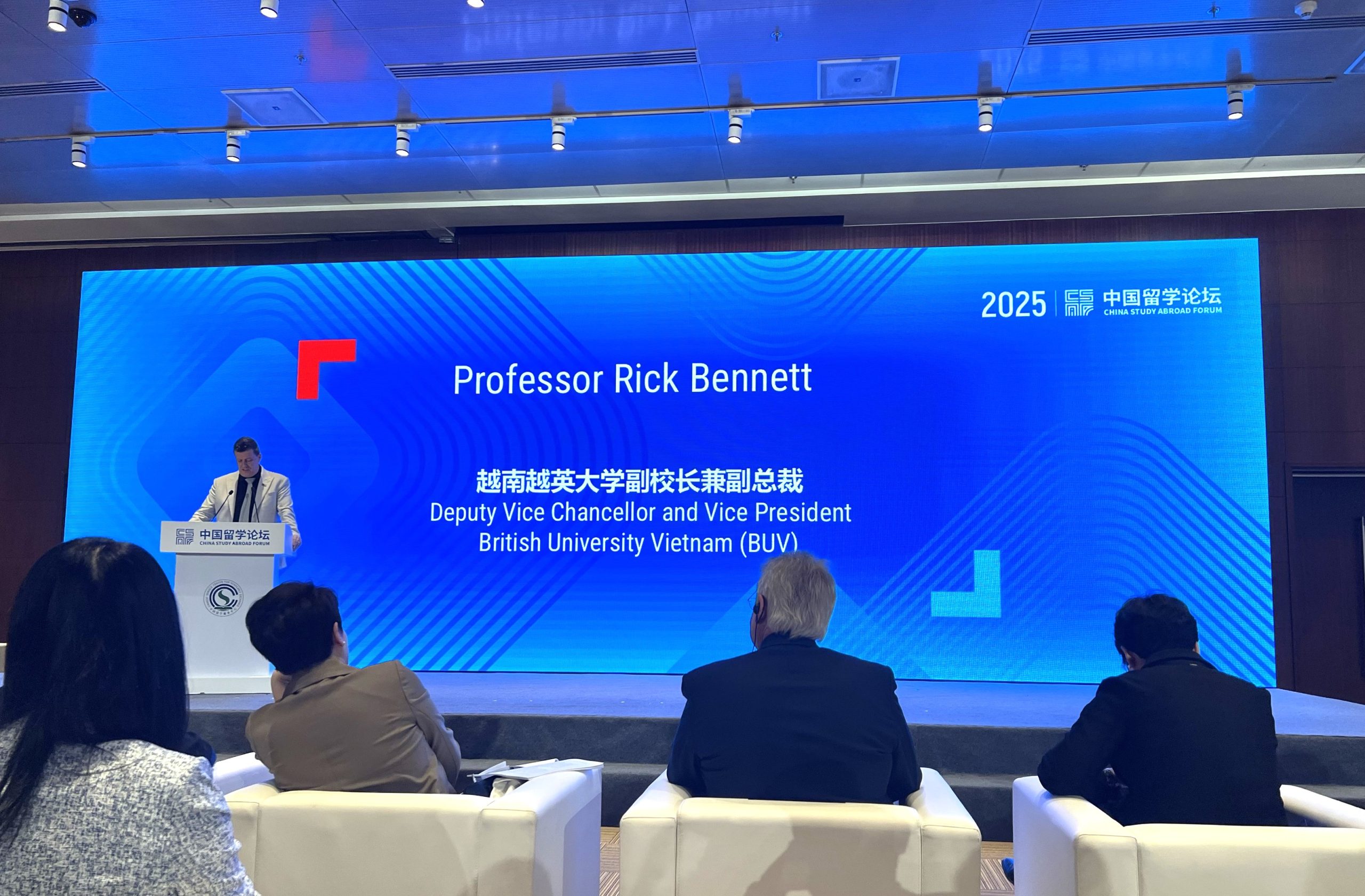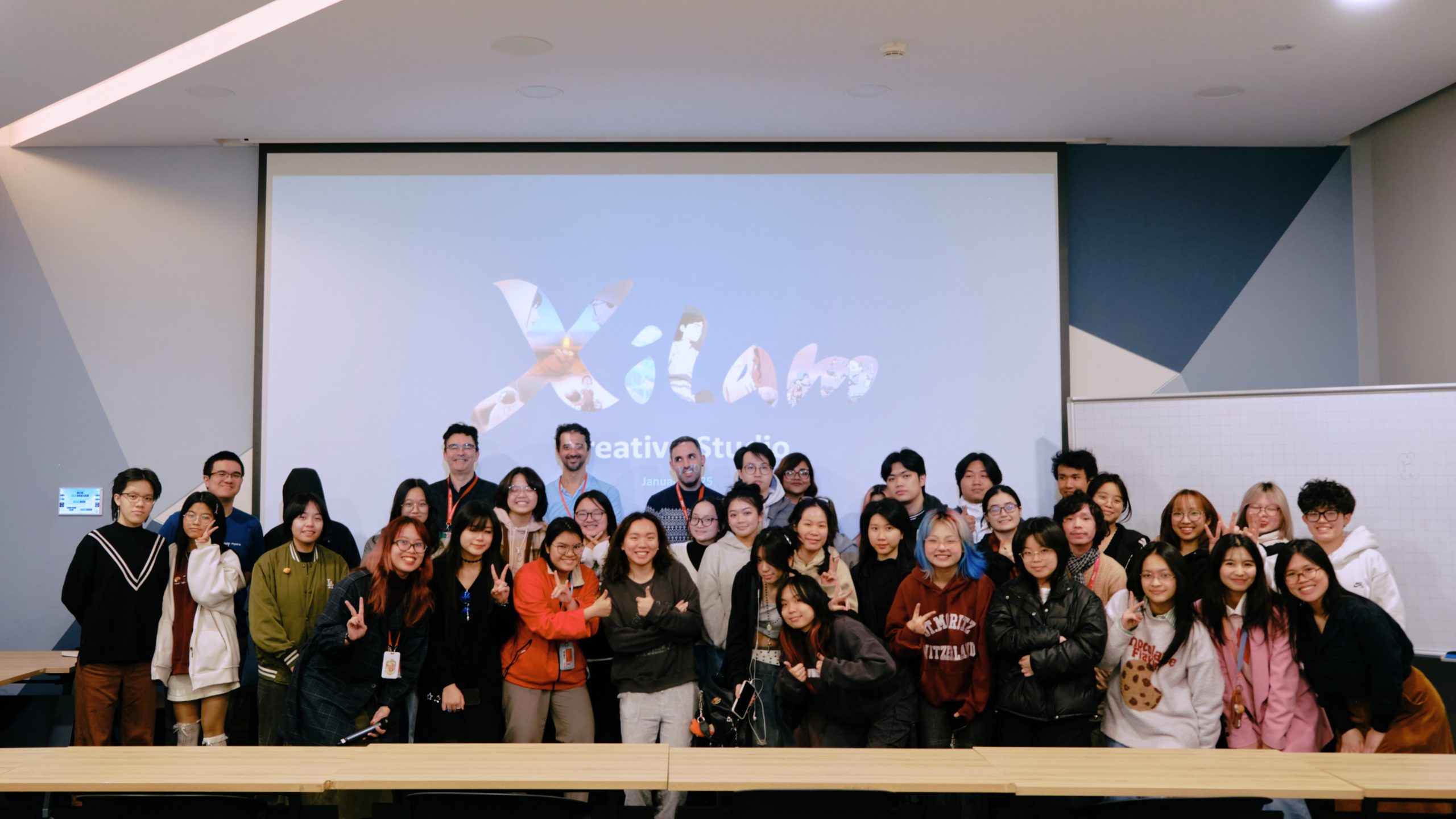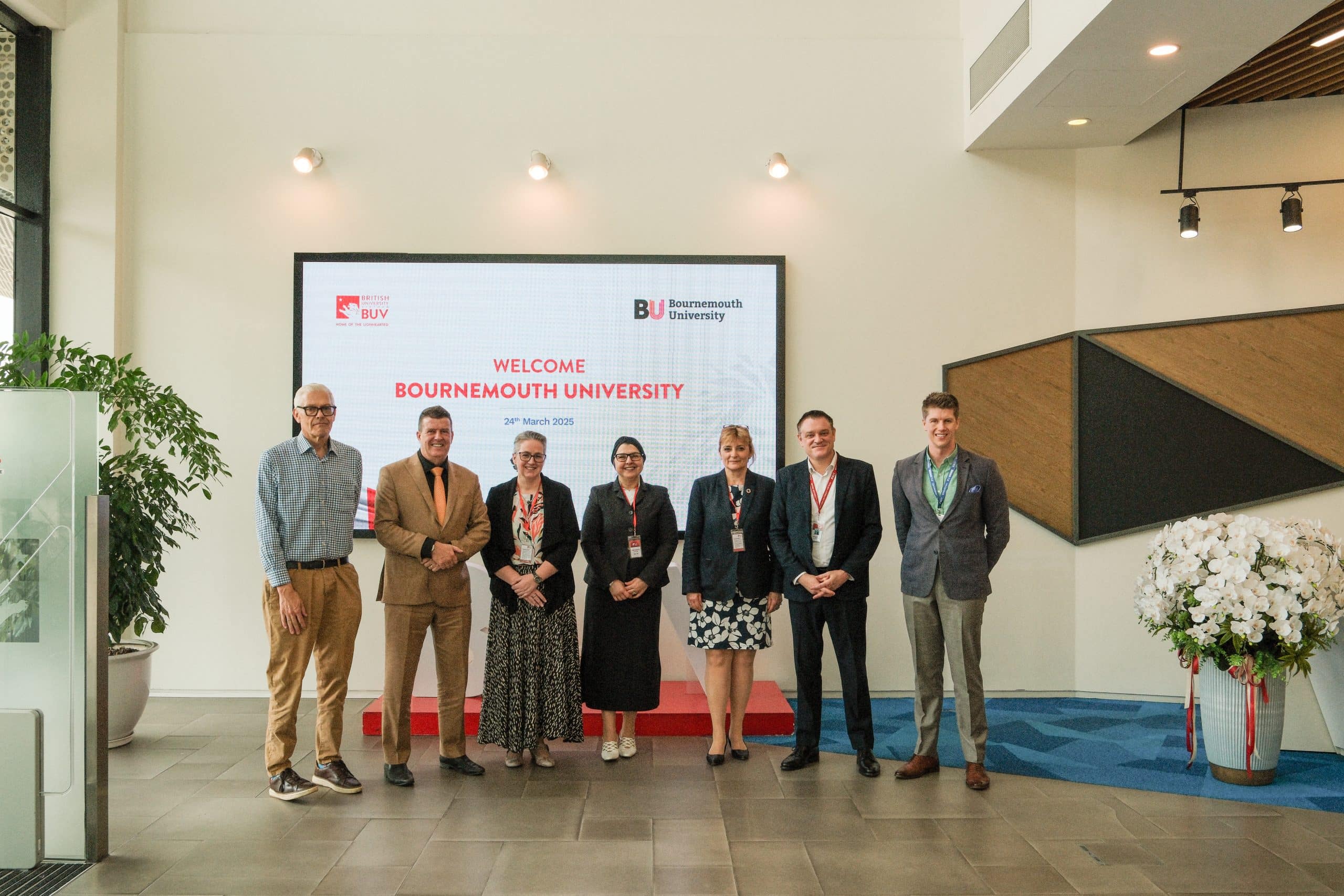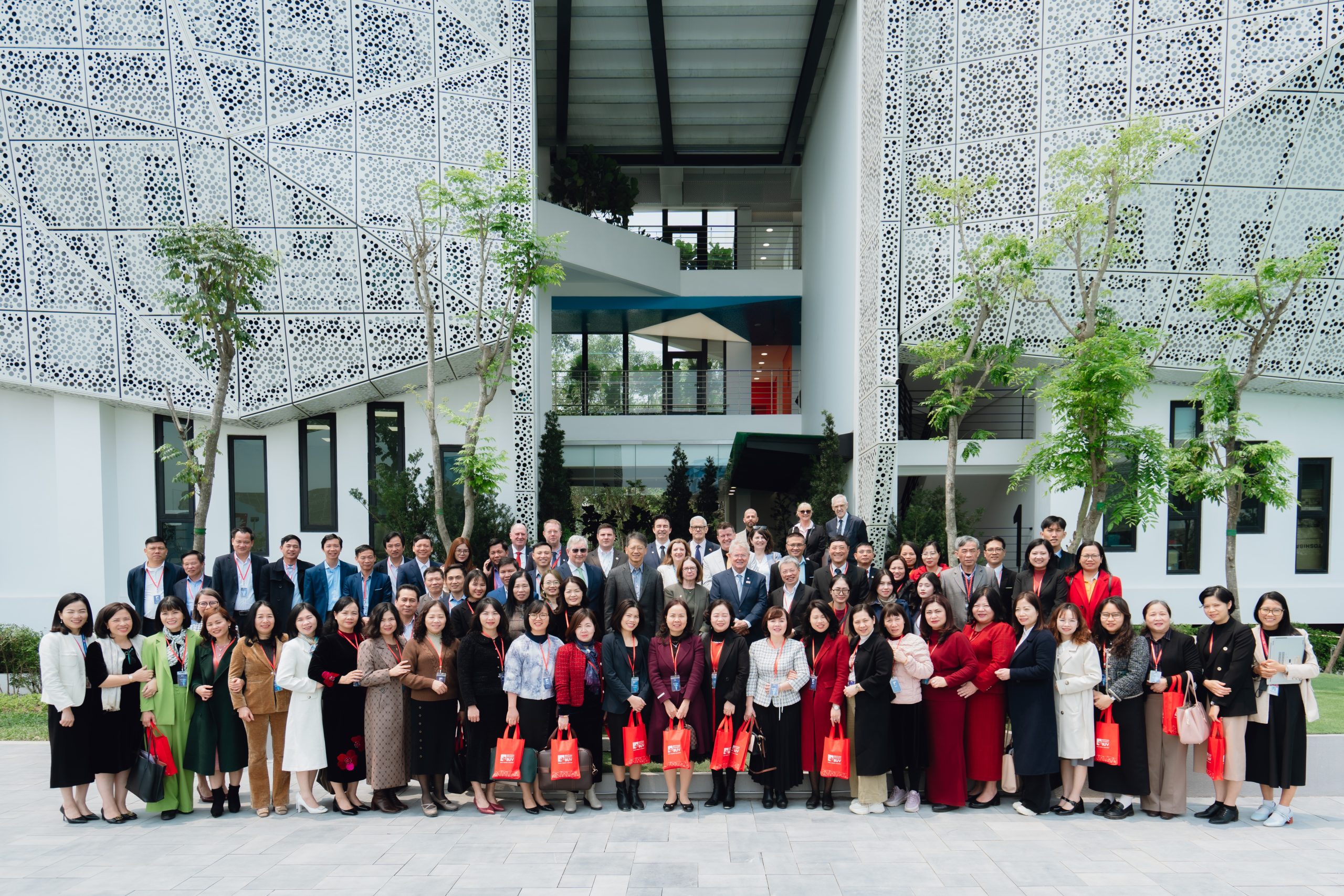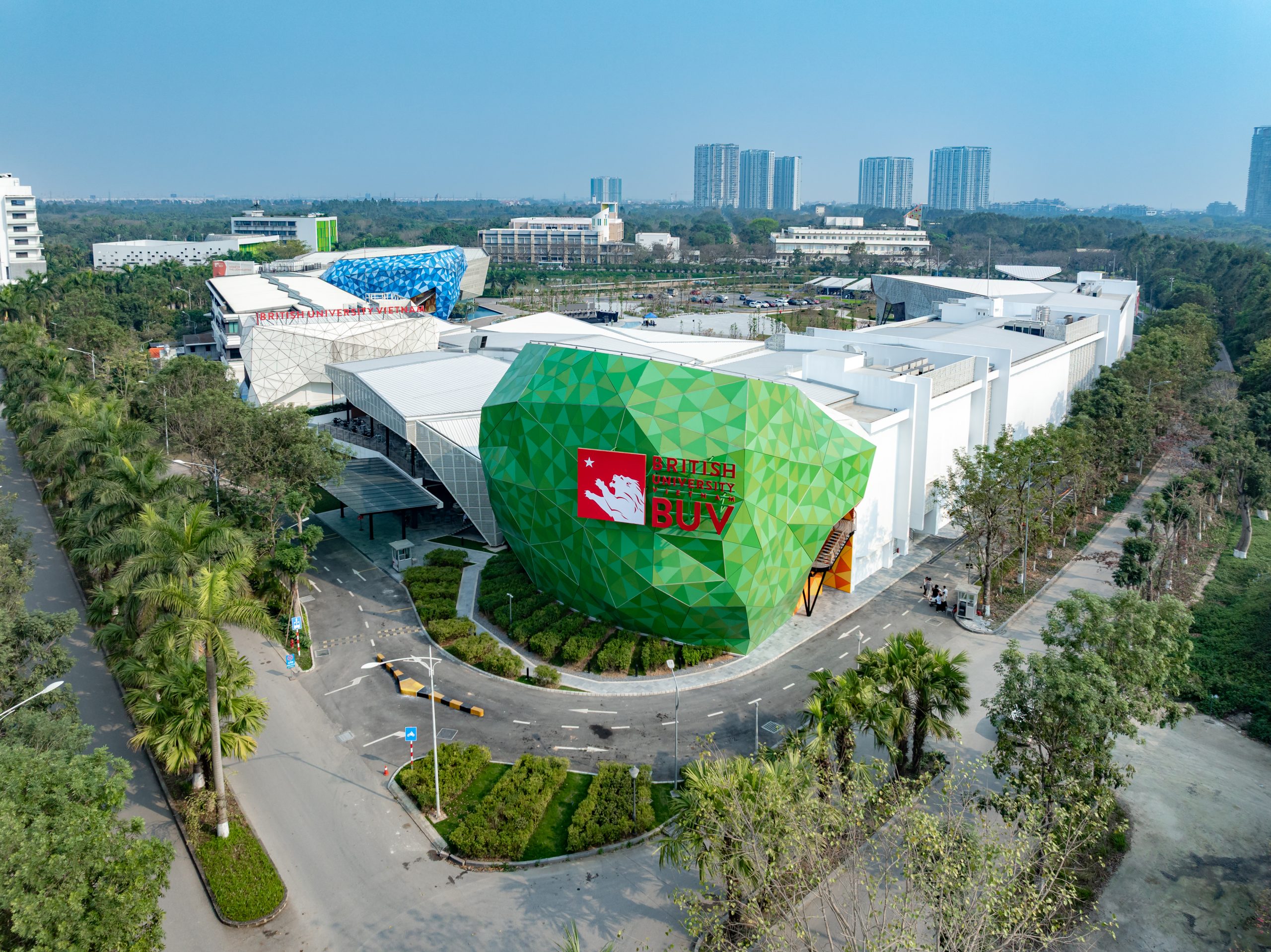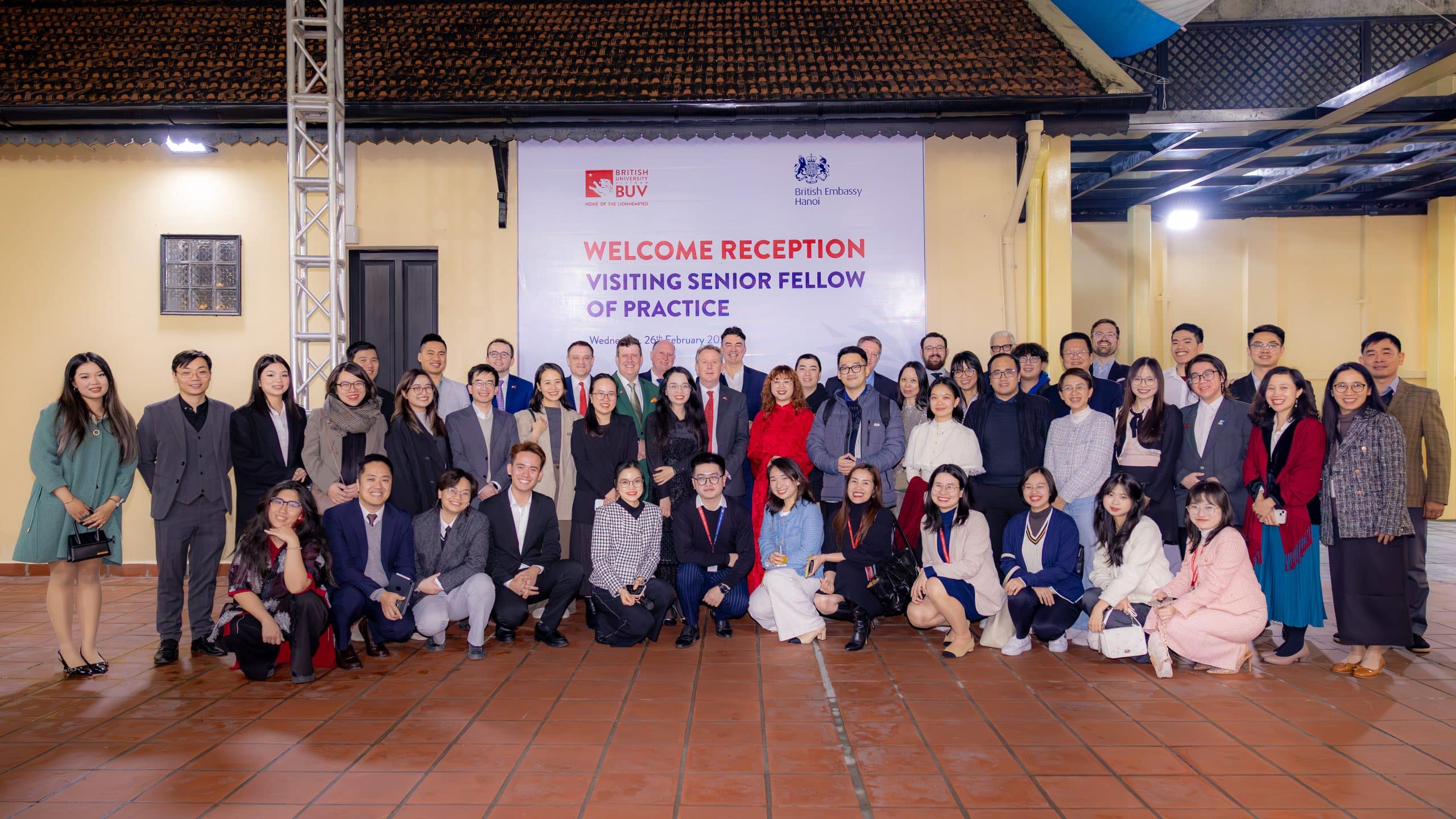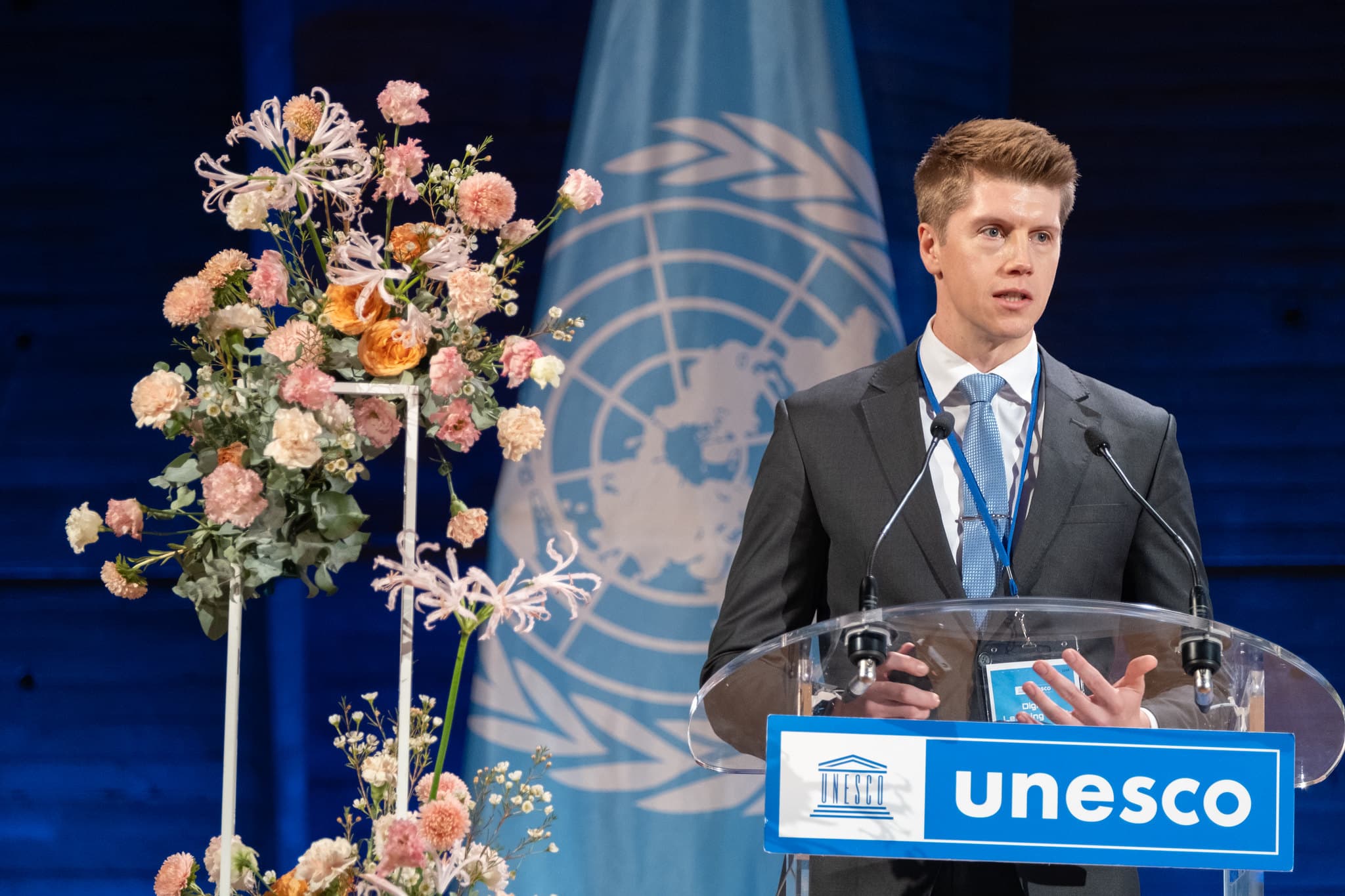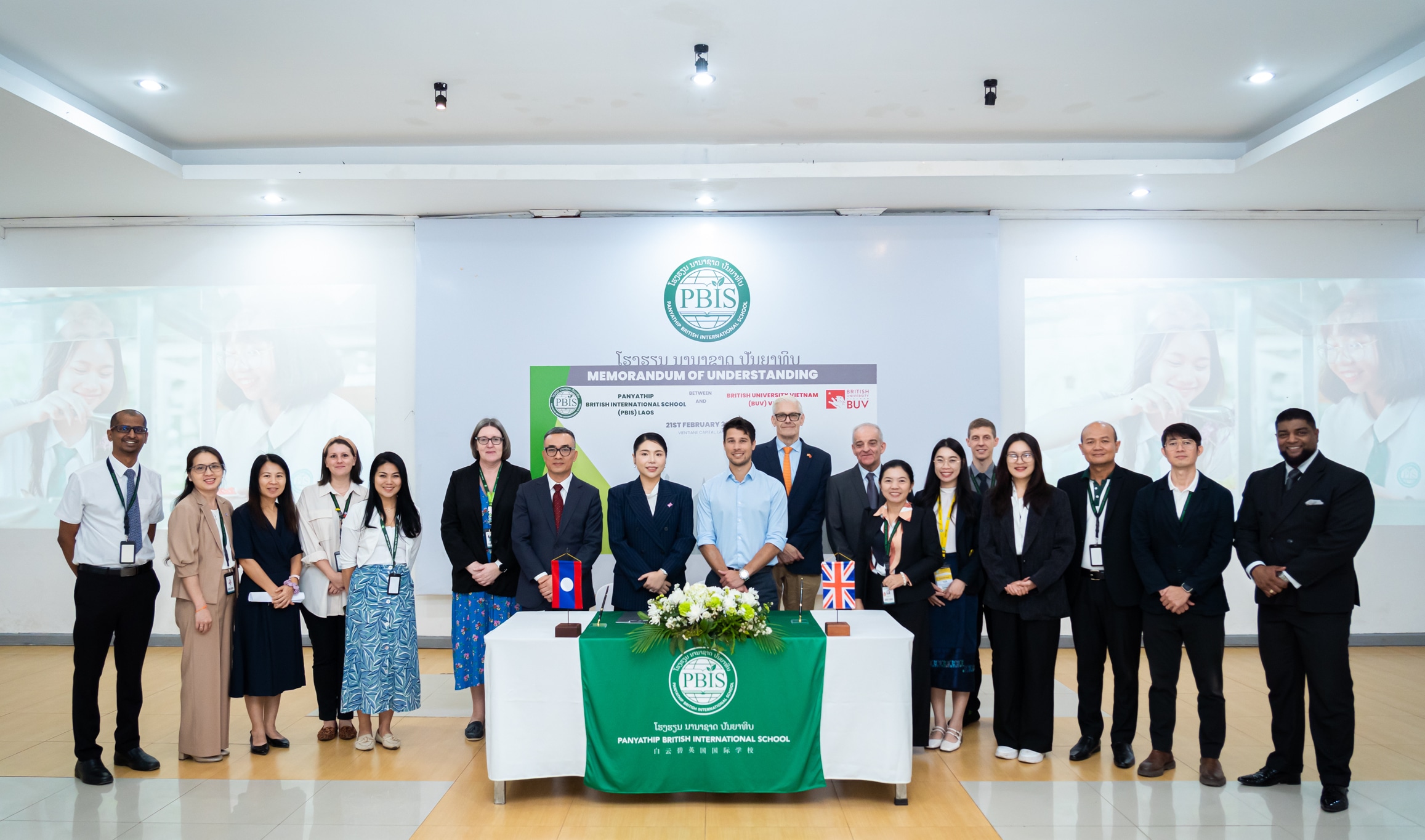
Mr. Mark Hamilton Gruchy: “Don’t be afraid to try and perhaps fail”
May 17, 2021
![]() 02:35:26
02:35:26
Mark Hamilton Gruchy, a lecturer at British University Vietnam and winner of 1st place in a recent worldwide professional photography competition, advises students not to stay in their comfort zone.
Mr. Mark Hamilton Gruchy won First Prize in the Creative category at the Sony World Photography Award 2021 in April 2021 with ‘The Moon Revisited’. He is currently teaching photography class for those majoring in Contemporary Creative Practice (CCP) at British University Vietnam (BUV).
In an interview with VnExpress, he shared his experience on how to create a masterpiece, as well as how to instill passion and confidence in young people interested in art, photography, and creative design.
Question 1: What is your motivation behind the body of work? How did the concept occur to you, in terms of idea and execution?
I have always had an interest in space and aviation, and I was using 3D programs to test compositing 3D models with the moon images when I realised that I had something original and strong enough for me to pursue further.
The Moon is a static and unchanging world, and I liked the idea of contrasting that with the dynamic change that continues on Earth over time. The subject matter in each image varies from quiet serious references to war, the environment and climate change to more playful imagery which is meant to make you think but also to have fun at the expense of the conspiracy theorists like seen in the Coronavirus image.
The choice for what is included in the photographs is personal and reflects my views to some extent but also acknowledges my background in art in images like the Campbells Soup picture which references Andy Warhol and Pop Art alongside the image of the toilet which acknowledges Marcel Duchamp’s conceptual work. The images also reflect issues that were current at the time of the moon landings.

Question 2: Please share about your methods, from preparation to processing, compositing the images and finalizing them. How long does it take you to produce a piece and the entire series? How did you overcome the difficulties?
The idea for the picture is the hardest thing to establish. Having done that, the image usually takes several days to produce. Sometimes, I will revisit them over a couple of months to correct errors that I have found long after I think I have completed the picture. It has taken me 18 months to make the 23 images in the project.
The images of the moon are copyright free scans from NASA which I process in Photoshop before I composite with them. I select the images that present opportunities to have the 3D content included to create new meaning to the original photographs. The final images are created adding the models in 3D software then adding textures and materials to make the models look realistic. Virtual lights and cameras are then used to mimic the lighting and cameras used in the original photographs. This image is rendered out as a Photoshop file. I use this to make all the final adjustments to the photograph.
Question 3: How did you learn about the Sony World Photography Awards? How do you feel after learning the news of your award?
– As a working photographer, I have known of the Sony Awards for years. I have attended the London exhibition of the awards several times and regard it as one of the World’s best competitions for photographers. I am fortunate enough to have been shortlisted and won awards before, but this is by far the most significant. I was very excited to have my work recognised by the jurors of The Sony Awards. it is the sort of accolade that any photographer would wish to receive so I consider myself very fortunate.

Question 4: As a Teaching Fellow at the British University of Vietnam, how do you balance between your pedagogical responsibilities and your personal passion/ pursuits?
– That balance has never been difficult for me to achieve, as I always felt that the lecturing, my own professional and personal work benefited each other. For several years I have taught one or two days a week in higher education and worked as a freelancer for the rest of the time. The teaching meant I had to be current with my knowledge and the professional practice ensured that I knew current trends, work practices and expectations of clients. These skills transfer well across both sectors.
I have been teaching in Vietnam for only 16 months, almost all which time has been at the British University of Vietnam. I am very fortunate as my students all speak at least two languages: Vietnamese and English, which has helped make delivering lectures a lot simpler. One of the harder things for a student to adapt to in art and design learning is that they are the artists and so they must generate their own ideas; the teachers are there to guide them and teach them how to develop this way of thinking. The students here are quite new to the responsibility placed on them, however, the majority of them rise to this new challenge very well.
Question 5: What are some important aspects to know about the field of contemporary creative practice that you will be instructing? How are they applied in our contemporary lives and what are the career prospects in Vietnam and beyond?
– For me the most important learning for students that are new to the study of the creative arts is for them to gain an understanding of the importance of research and how that has to be applied to be an effective artist or designer. This is an exciting time in the development of contemporary creative arts in Vietnam and with the country’s growing prosperity, there will be an increasing demand for the services of young and exciting designers like those we are training at BUV. There are many different career paths in the design field in Vietnam, but we do always encourage students to understand the value of looking at not only the domestic marketplace but the international one as it is so much more accessible nowadays.
Question 6: Do you have any message for young and aspiring creative practitioners, especially in the field of image-making?
– My message is based purely on my personal experience, but I feel it applies universally. To be successful at image making you must always experiment. Do not be afraid to try and perhaps fail. The alternative to this is to play it safe and churn out imagery and designs that everyone else does which means you will never be testing your boundaries and will remain stuck in relatively unexciting jobs as copyist and not an innovator. You must test yourself – without doing this you cannot shine.

Question 7: What is your future plan after this award?
– Currently, I am teaching at the British University of Vietnam and that is what I will continue to do for the foreseeable future. I have had a lot of international press coverage which has led to some work and print sales but with international travel at a halt it is not likely I will be flying off anywhere to do a shoot. In the meantime, I continue to work on my follow up personal project to The Moon Revisited, Earthbound.
The Sony World Photography Award is widely regarded as one of the most prestigious awards in the global photography industry. The categories in the global competition have piqued the photographers’ interest and provide an in-depth look at contemporary works of art.
Mr. Mark Hamilton Gruchy completed a BA in Fine Art in Portsmouth and an MA in Digital Animation at The Cass at London Metropolitan University, UK and has since been working with moving image and stills photography. Photography is his preferred medium though he does continue to use moving image as an adjunct to his personal work. His work has been exhibited internationally. Mark is currently based in Hanoi, Vietnam and is a Teaching Fellow at British University Vietnam.

